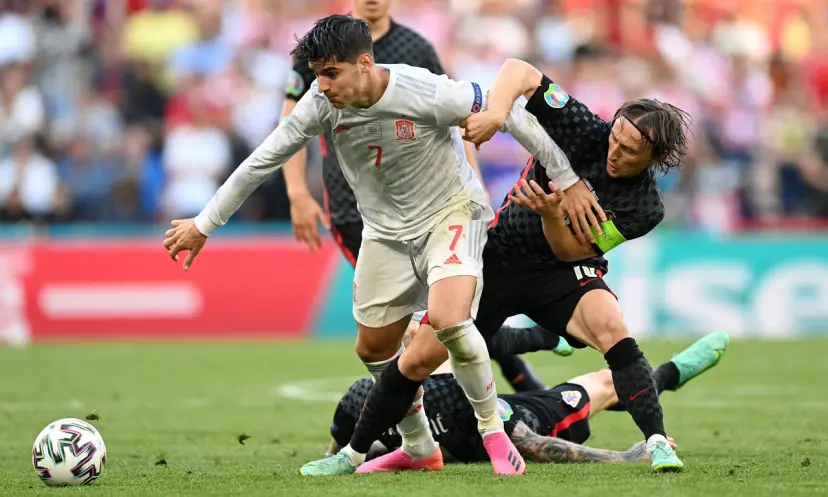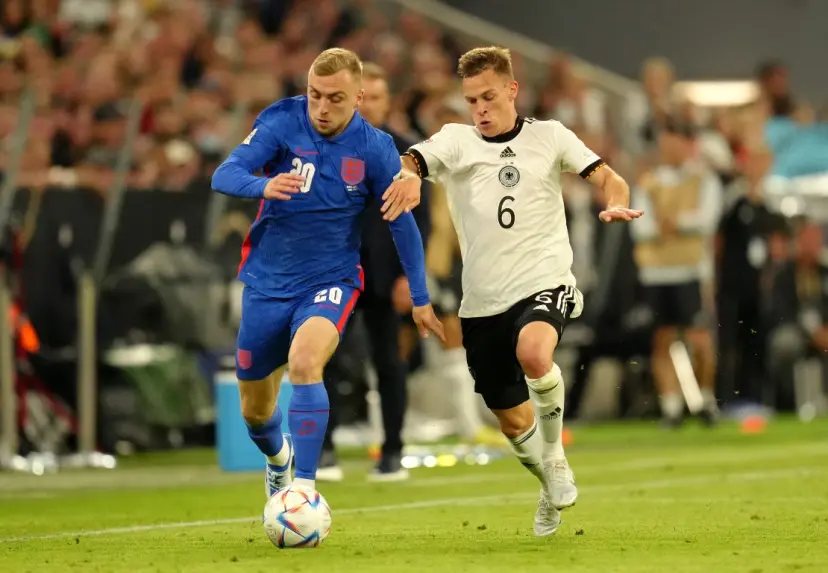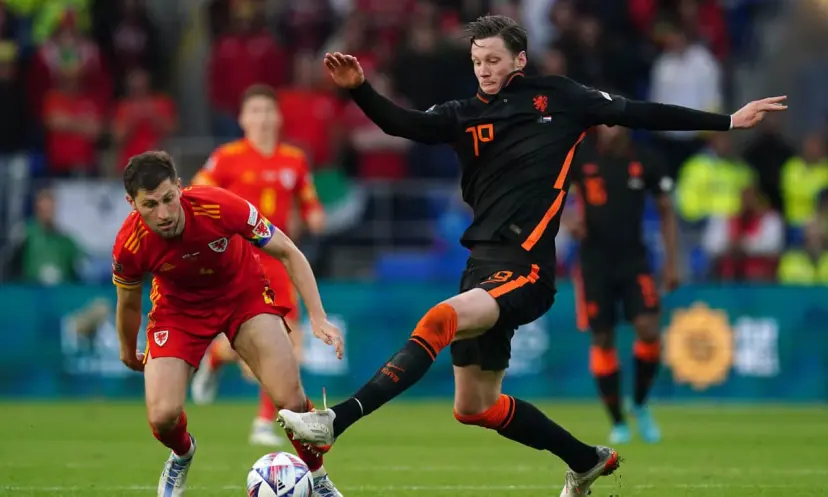A guide to the UEFA Nations League
Published: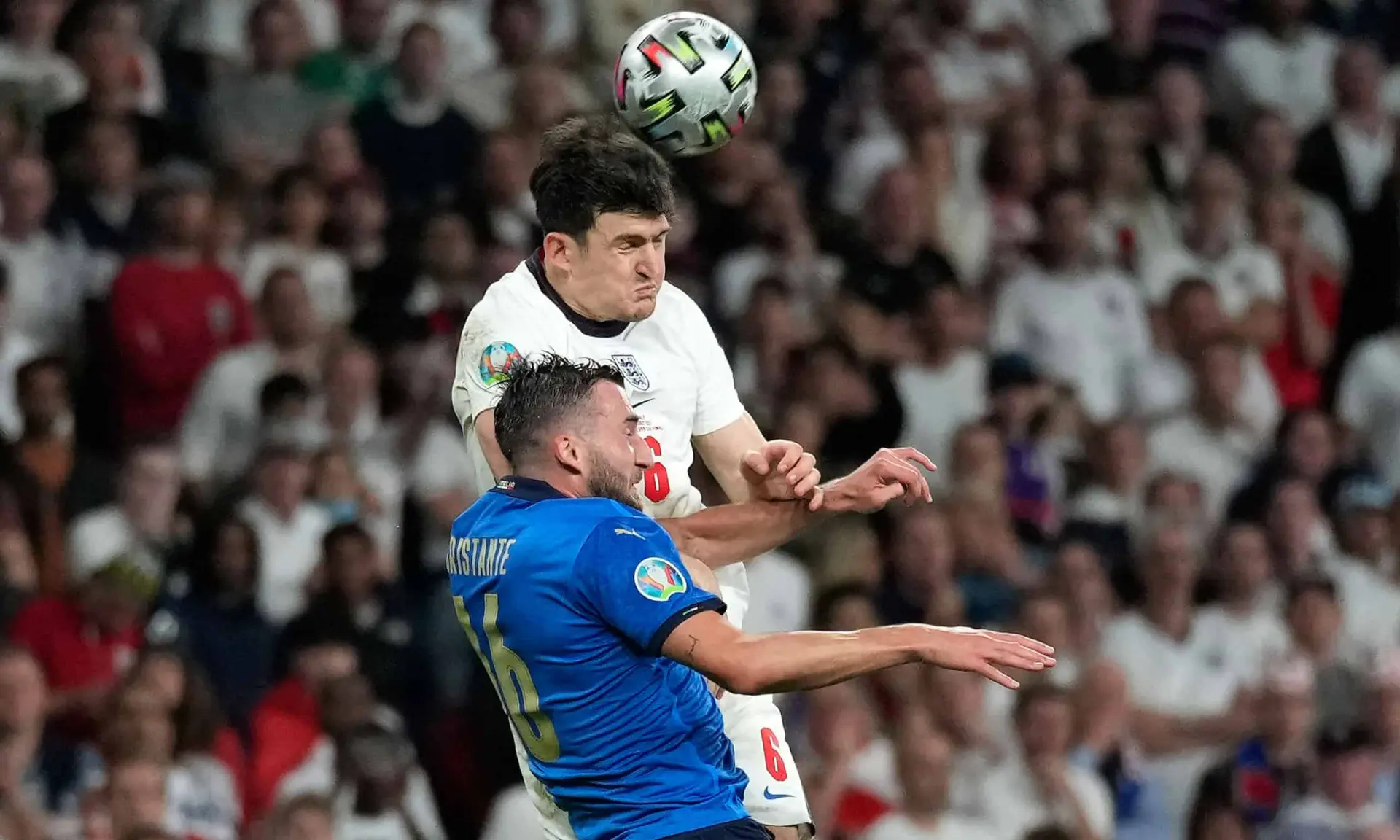
This summer will see the third iteration of the UEFA Nations League, which has already undergone modifications since its controversial introduction in 2018.
To refresh our memories of how the competition works, we have examined the latest format and looked at the data to determine what could happen this time around.
What is the point of the UEFA Nations League?
The UEFA Nations League was designed to replace international friendlies with more competitive matches, which it does in two main ways.
Firstly, it ensures that teams play opponents of a similar level by dividing them into leagues based on their ability. Secondly it provides nations with another route to qualification for the World Cup and European Championship, thereby giving them something to play for besides pride.
How does the UEFA Nations League work?
The Nations League begins with a league phase, with the 55 UEFA members split into four leagues, with A being the strongest and D the weakest.
When the competition was first formed, this split was based on each nation’s UEFA coefficient, but teams can be promoted and relegated between leagues at the end of each tournament.
To keep the number of fixtures manageable, each league is divided into groups of four teams – apart from one three-team group in League D – with each team playing the other three home and away for a total of six matches, similar to the Champions League.
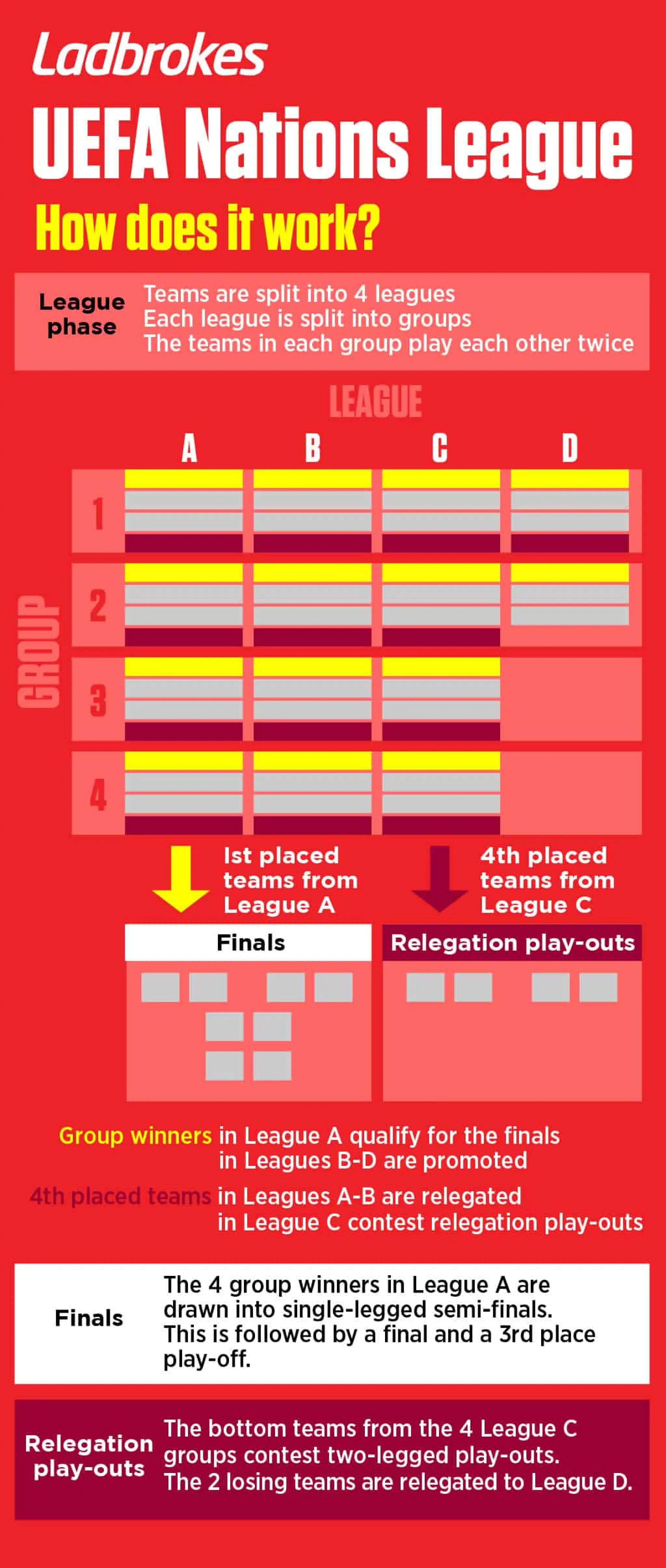
At the conclusion of the league phase, the group winners in leagues B, C and D are promoted and the last-placed teams in leagues A and B are relegated. Due to there only being two groups in league D, the four last-placed teams in league C contest two-legged relegation play-outs to determine which two go down.
Before that, the four group winners in league A will advance to the Nations League Finals. An open draw is used to pair teams into single-legged semi-finals, with the winners progressing to the final and the losers playing off for third place.
When is the UEFA Nations League played?
Four of the six rounds in the league phase will take place in June 2022, following the 2021-22 domestic season. The remaining two rounds are scheduled for September 2022, which means that we will know who has qualified for the finals before the 2022 World Cup kicks off in November.
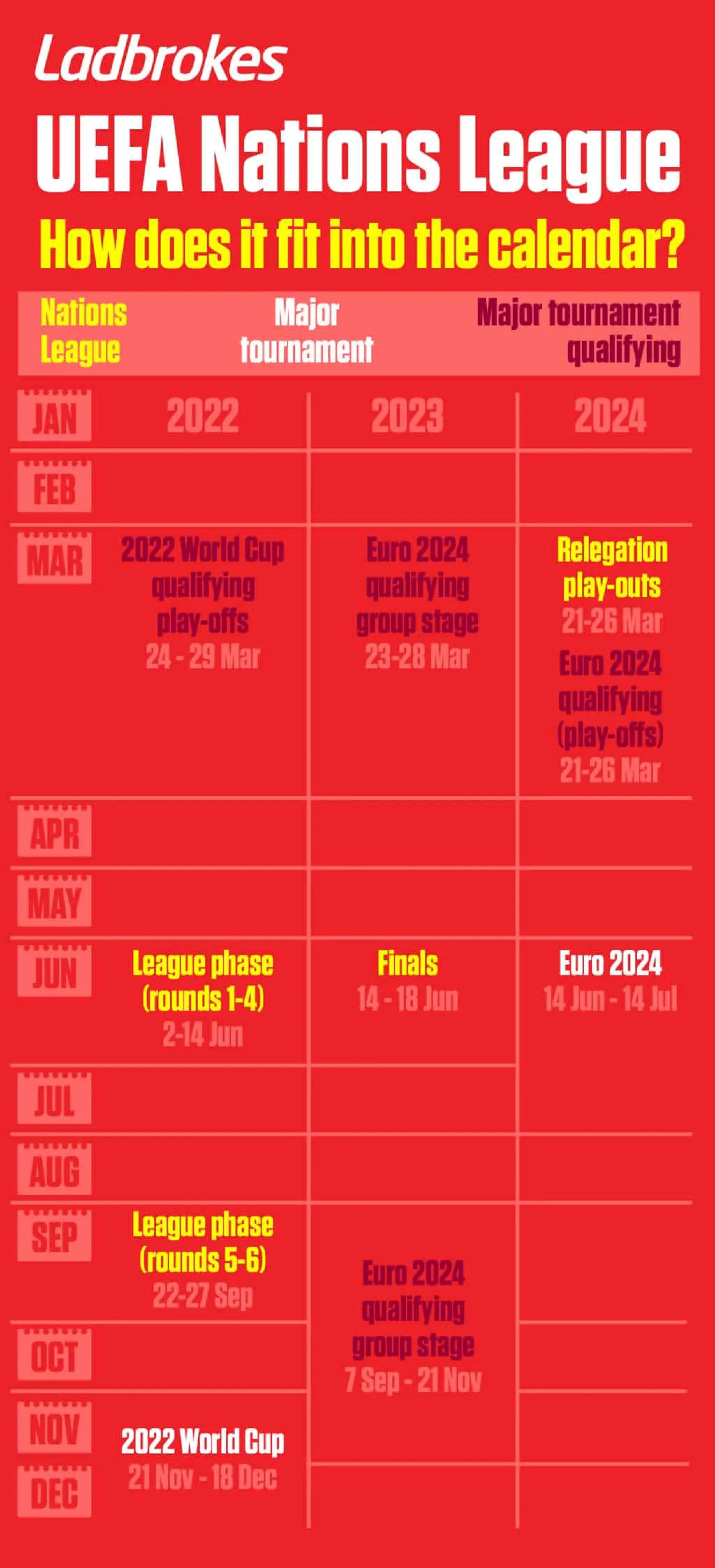
The Nations League Finals will take place in June 2023, after the 2022-23 season and partway through the qualifying process for Euro 2024.
As an added incentive, UEFA have confirmed that 12 teams will play off for three spots at their flagship international tournament based on their Nations League performance. Details of these play-offs have yet to be announced.
Who will win the Nations League?
While the prospect of promotion and relegation should keep things interesting in all four leagues, let us focus on League A and the battle to win the Nations League Finals. Even with teams being grouped together by ability, the group draw has favoured some nations more than others.
When we compare the current FIFA world ranking points for the teams in League A, we can see why Belgium and France are among the favourites in the Nations League odds.
Belgium are still the top-ranked team in the world and they have been drawn into a relatively easy group in which their neighbours the Netherlands – ranked 10th – are their closest competition.
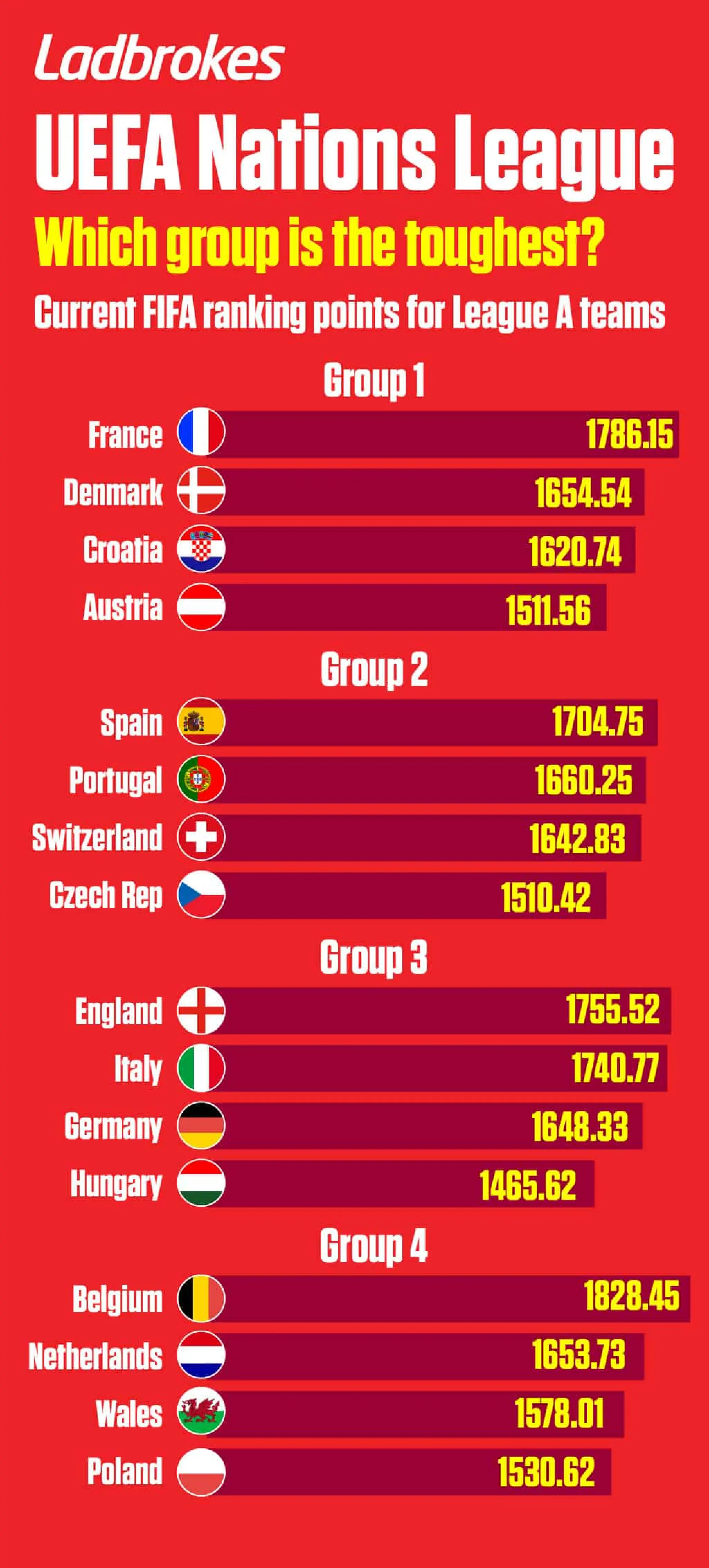
France have been similarly blessed with a kind draw, with ninth-placed Denmark likely to be their toughest opponent.
In the other two groups, Spain and Portugal have to face off against each other and there will be a rerun of the Euro 2020 final between England and Italy. With only one team in each group advancing to the finals, we are guaranteed to see a few big names miss out.
We can also look at how each of the teams in League A has fared against the others recently to gauge how they might perform across the league phase and the finals. We have gone back to the end of the last World Cup in 2018 and calculated each of the 16 nations’ records against the other 15 over this period.
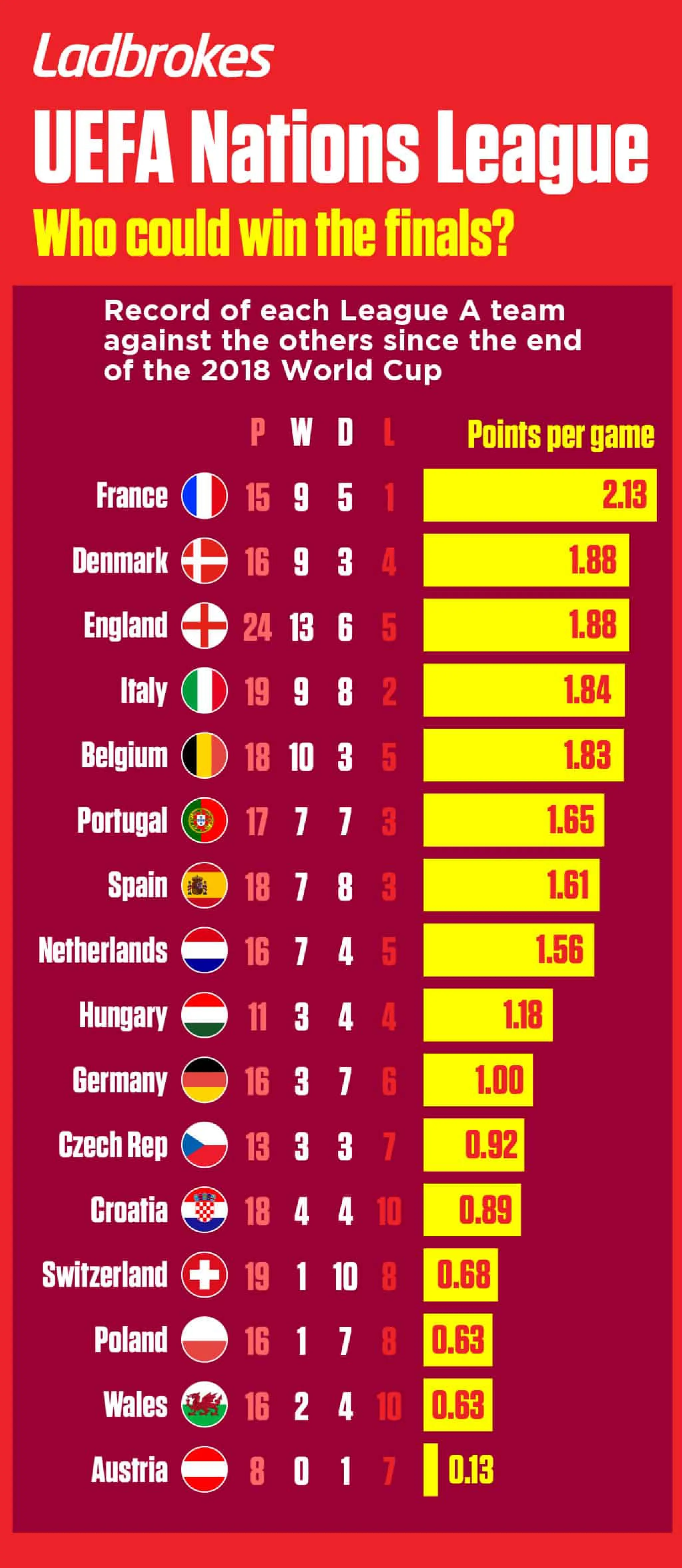
France are streets ahead by this measure, having only lost one game out of 15 against a team of this calibre: a 2-0 defeat to the Netherlands in the inaugural Nations League. However, their Group 1 rivals Denmark have a strong enough record that they cannot be written off. The French should find Austria to be more straightforward opponents, given that the latter lack both experience and success against the leading European nations in recent years.
Belgium should have a relatively easy ride in Group 4 as two of their opponents – Poland and Wales – have struggled against higher-ranked teams, winning only three such matches between them compared to a combined 18 defeats since the summer of 2018.
Will there be a new Nations League format?
In December 2021 it was announced that UEFA were looking to include the 10 South American nations from the CONMEBOL confederation – which includes international powerhouses like Argentina and Brazil – in the 2024-25 Nations League.
With FIFA weighing up plans to increase the frequency of World Cups to every two years and likely bans for Russia and Belarus in response to the invasion of Ukraine, we could see further seismic shake-ups to the international footballing calendar.
View the latest football odds
